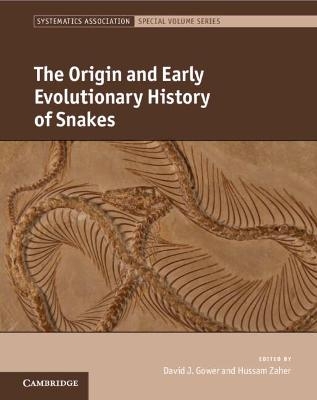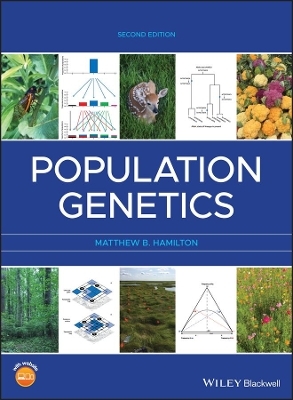
The Origin and Early Evolutionary History of Snakes
Cambridge University Press (Verlag)
978-1-108-83734-7 (ISBN)
Snakes comprise nearly 4,000 extant species found on all major continents except Antarctica. Morphologically and ecologically diverse, they include burrowing, arboreal, and marine forms, feeding on prey ranging from insects to large mammals. Snakes are strikingly different from their closest lizard relatives, and their origins and early diversification have long challenged and enthused evolutionary biologists. The origin and early evolution of snakes is a broad, interdisciplinary topic for which experts in palaeontology, ecology, physiology, embryology, phylogenetics, and molecular biology have made important contributions. The last 25 years has seen a surge of interest, resulting partly from new fossil material, but also from new techniques in molecular and systematic biology. This volume summarises and discusses the state of our knowledge, approaches, data, and ongoing debates. It provides reviews, syntheses, new data and perspectives on a wide range of topics relevant to students and researchers in evolutionary biology, neontology, and palaeontology.
David J. Gower is a Merit Researcher in Herpetology and Head of the Vertebrates Division in the Department of Life Sciences at The Natural History Museum, London. A collections-based, organismal biologist with interests in a wide range of topics in natural history and evolutionary biology, he has taxon expertise in Triassic archosaurs and limbless, mostly fossorial, amphibians and reptiles. Hussam Zaher is Full Professor and Curator of Herpetology and Vertebrate Paleontology in the Museum of Zoology at the University of São Paulo. He is an evolutionary biologist focusing on the systematics, palaeontology, and comparative anatomy of reptiles, with an emphasis on the diversity and evolutionary history of snakes and other squamates.
1. Introduction Hussam Zaher and David J. Gower; Part I. The Squamate and Snake Fossil Record: 2. The origin and early diversification of squamates Susan E. Evans; 3. The first 80 million years of snake evolution: the Mesozoic fossil record of snakes and its implications for origin hypotheses, biogeography, and mass extinction Jason J. Head, Alexandra F. C. Howard and J Johannes Müller; 4. The diversity and distribution of Palaeogene snakes: a review, with comments on vertebral sufficiency Krister T. Smith and Georgios L. Georgalis; 5. Miocene snakes of Eurasia: A review of the evolution of snake communities Martin Ivanov; Part II. Palaeontology and the Marine-Origin Hypothesis: 6. Sea-serpentism Olivier Rieppel; 7. Reassessing the morphological foundations of the Pythonomorph Hypothesis Michael J. Polcyn, Bruno G. Augusta and Hussam Zaher; 8. A review of non mosasaurid (dolichosaur and aigialosaur) mosasaurians and their relationships to snakes Bruno G. Augusta, Hussam Zaher, Michael J. Polcyn, Anthony R. Fiorillo and Louis L. Jacobs; 9. A review of the skull anatomy and phylogenetic affinities of marine pachyophiid snakes Hussam Zaher, Bruno G. Augusta, Rivka Rabinovich, Michael J. Polcyn and Paul Tafforeau; Part III. Genomic Perspectives: 10. Using comparative genomics to resolve the origin and early evolution of snakes Sara Ruane and Jeffrey W. Streicher; 11. The evolution of squamate chitinase genes (CHIAs) supports an early insectivory–carnivory transition during the origin of snakes Christopher A. Emerling; 12. Origin and early diversification of the enigmatic squamate venom cocktail Vivek Suranse, Ashwin Iyer, Timothy N. W. Jackson and Kartik Sunagar; Part IV. Neurobiological Perspectives: 13. Using adaptive traits in the inner ear to estimate ecology of early snakes Hongyu Yi; 14. A glimpse into the evolution of the ophidian brain Agustín Scanferla; 15. Eyes, vision and the origins and early evolution of snakes David J. Gower, Einat Hauzman, Bruno F. Simões and Ryan K. Schott; Part V. Anatomical and Functional Morphological Perspectives: 16. Diversity and evolution of the squamate hemipenis: An overview with particular reference to the origin and early history of snakes Giovanna G Montingelli, David J. Gower and Hussam Zaher; 17. The evolution of sperm-storage location in Squamata, with particular reference to snakes Henrique B. Braz and Selma M. Almeida-Santos; 18. An overview of the morphology of oral glands in snakes Leonardo de Oliveira and Hussam Zaher; 19. Macrostomy macrophagy and snake phylogeny David Cundall and Frances Irish; Index.
| Erscheinungsdatum | 21.07.2022 |
|---|---|
| Reihe/Serie | Systematics Association Special Volume Series |
| Zusatzinfo | Worked examples or Exercises |
| Verlagsort | Cambridge |
| Sprache | englisch |
| Maße | 210 x 261 mm |
| Gewicht | 1380 g |
| Themenwelt | Naturwissenschaften ► Biologie ► Evolution |
| Naturwissenschaften ► Biologie ► Zoologie | |
| Naturwissenschaften ► Geowissenschaften ► Mineralogie / Paläontologie | |
| ISBN-10 | 1-108-83734-4 / 1108837344 |
| ISBN-13 | 978-1-108-83734-7 / 9781108837347 |
| Zustand | Neuware |
| Informationen gemäß Produktsicherheitsverordnung (GPSR) | |
| Haben Sie eine Frage zum Produkt? |
aus dem Bereich


